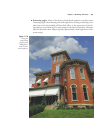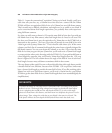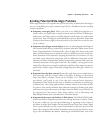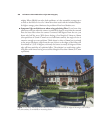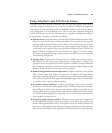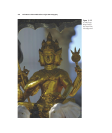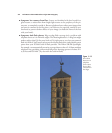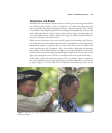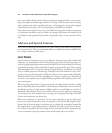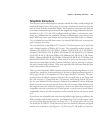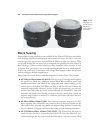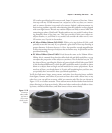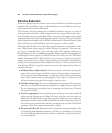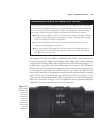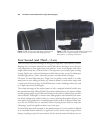
Telephotos and Bokeh
Bokeh describes the aesthetic qualities of the out-of-focus parts of an image and whether
out-of-focus points of light—circles of confusion—are rendered as distracting fuzzy
discs or smoothly fade into the background. Boke is a Japanese word for “blur,” and the
h was added to keep English speakers from rendering it monosyllabically to rhyme with
broke. Although bokeh is visible in blurry portions of any image, it’s of particular con-
cern with telephoto lenses, which, thanks to the magic of reduced depth-of-field, pro-
duce more obviously out-of-focus areas.
Bokeh can vary from lens to lens, or even within a given lens depending on the f/stop in
use. Bokeh becomes objectionable when the circles of confusion are evenly illuminated,
making them stand out as distinct discs, or, worse, when these circles are darker in the
center, producing an ugly “doughnut” effect. A lens defect called spherical aberration
may produce out-of-focus discs that are brighter on the edges and darker in the center,
because the lens doesn’t focus light passing through the edges of the lens exactly as it does
light going through the center. (Mirror or catadioptric lenses also produce this effect.)
Other kinds of spherical aberration generate circles of confusion that are brightest in
the center and fade out at the edges, producing a smooth blending effect, as you can see
at right in Figure 11.14. Ironically, when no spherical aberration is present at all, the
Chapter 11 ■ Working with Lenses 373
Figure 11.14 Bokeh is less pleasing when the discs are prominent (left), and less obtrusive when they blend into the
background (right).



